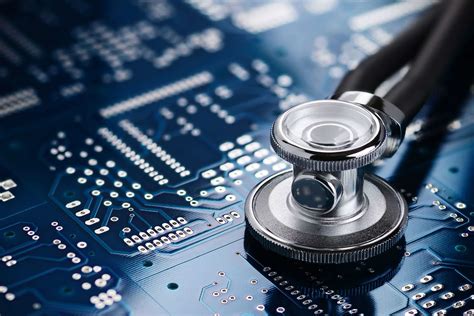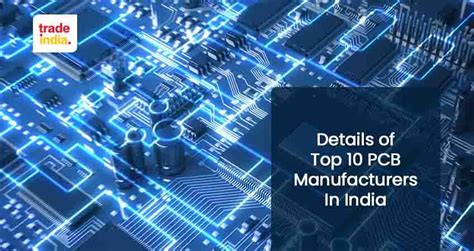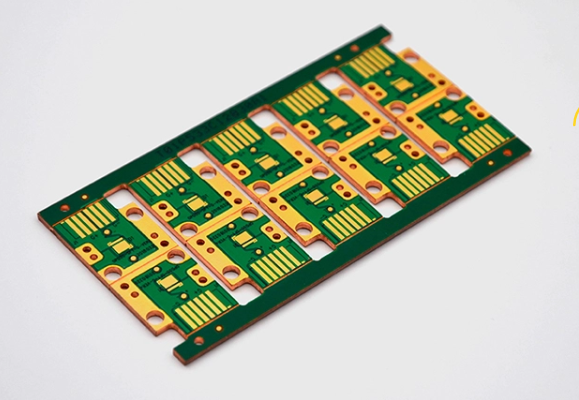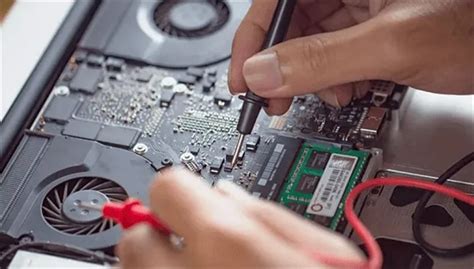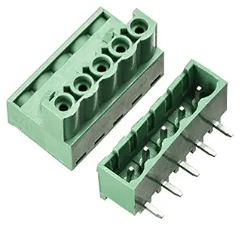Unveiling the Magic Behind Your Electronics: The Role of Assembly Companies in PCB Production
Key Takeaways
Understanding the pivotal role of assembly companies in PCB production provides invaluable insights into the realm of modern electronics. These companies leverage advanced technologies and a high degree of precision to ensure the reliable manufacturing of PCBs. The entire process, from component placement to final soldering, illustrates the meticulous craftsmanship required to create intricate circuits that power today’s electronic devices. The evolution of PCB production has been significantly shaped by the contributions of these specialized entities, cementing their importance in the global electronics ecosystem. Appreciating their expertise highlights the ingenuity behind every functional gadget, emphasizing the magic that transforms raw materials into complex, operational systems.
The Evolution of PCB Production: A Historical Overview
The production of printed circuit boards (PCB) has evolved dramatically since its inception in the early 20th century. Initially, electronics relied heavily on point-to-point wiring, a labor-intensive process that lacked the reliability required for more complex applications. The breakthrough came with the development of printed circuit technology in the 1940s, which transformed electronic assembly. Early printed circuits were simple, one-sided boards with components attached using rudimentary methods.
The 1960s marked a significant turning point with advancements in etching techniques and lamination technology, enabling the creation of multi-layered boards that could support more intricate designs and higher functionality. This period also saw the rise of PCB assembly (PCBA) companies specializing in mass production, enhancing consistency and reducing costs.
In the 1980s and 1990s, surface-mount technology (SMT) revolutionized PCB manufacturing. This allowed components to be placed directly onto the surface of the boards rather than through-hole methods, paving the way for miniaturization and increased circuit complexity. The introduction of automated assembly lines further streamlined production processes with unprecedented precision and speed.
Today, modern PCB production incorporates cutting-edge technologies such as laser direct imaging (LDI) for more accurate traces and vias, as well as advanced materials like high-frequency laminates for better performance in telecommunications and aerospace applications. Computer-aided design (CAD) software plays a crucial role in designing intricate board layouts that meet stringent industry standards.
| Era | Advancements |
|---|---|
| Early 20th Century | Point-to-point wiring |
| 1940s | Introduction of printed circuit technology |
| 1960s | Multi-layered boards, PCB assembly companies |
| 1980s-1990s | Surface-mount technology (SMT), automated lines |
| Modern | Laser direct imaging (LDI), advanced materials |
Each phase in the evolution of PCB production has brought about improvements in reliability, efficiency, and capability, demonstrating how assembly companies are pivotal in driving electronic innovation forward.
The Significance of Assembly Companies in the Electronics Ecosystem
Assembly companies form the backbone of the electronics industry, bridging the gap between innovative design and tangible products. These companies specialize in PCB assembly (PCBA), transforming schematic diagrams into functional printed circuit boards. The meticulous nature of this process demands a high degree of precision and expertise, which assembly companies provide through specialized skills and advanced machinery.
“The role of assembly companies is akin to that of an alchemist, turning raw materials into the gold of modern technology.”
Assembly companies leverage cutting-edge technologies to ensure that each PCB is crafted to perfection. From component placement, where automated machines precisely position components on the board, to soldering processes that bind these components securely, every step is meticulously overseen to ensure impeccable quality. By doing so, they help overcome challenges such as miniaturization and complexity in modern electronic devices.
Moreover, assembly companies play a critical role in maintaining quality standards. They perform various tests and inspections throughout the production process to detect any flaws early on. This proactive approach helps mitigate risks, ensuring that only high-quality PCBs make their way into consumer hands.
Ultimately, without assembly companies’ dedicated efforts and technological prowess, many of today’s electronic marvels would remain mere blueprints. Through their contributions, they not only support but actively drive forward technological innovation and consumer electronics’ rapid evolution.
Unpacking the PCB Manufacturing Process: From Design to Final Inspection
The journey of PCB assembly begins with the intricate design phase, where engineers meticulously layout the circuit patterns using advanced software tools. This blueprint is then transformed into a physical board through a series of precise fabrication processes. First, a photosensitive layer is applied to a copper-clad board, and ultraviolet light is used to transfer the circuit pattern onto it. This is followed by etching, where unwanted copper is removed, leaving behind the designed pathways.
Next comes the drilling process, where tiny holes are created for mounting components. These vias play a crucial role in interconnecting various layers of the PCB. After drilling, the board undergoes plating and coating to prepare it for component placement. In this stage, sophisticated PCBA machinery ensures components are placed accurately on their designated spots.
Soldering follows, using techniques such as reflow or wave soldering to create strong electrical connections. Once soldered, each PCB undergoes thorough testing and inspection phases that include both automated optical inspection (AOI) and in-circuit testing (ICT). These ensure that every circuit functions flawlessly before it leaves the assembly line.
In essence, PCB manufacturing is an art form where precision and expertise blend seamlessly with cutting-edge technology to produce the backbone of our modern electronic devices.
State-of-the-Art Technologies in PCB Assembly
The realm of PCB assembly has witnessed revolutionary advancements with the integration of state-of-the-art technologies. One of the pivotal innovations is Surface Mount Technology (SMT), which allows for the efficient placement of components onto the PCB with remarkable precision. Automated Optical Inspection (AOI) systems play a critical role in ensuring the quality of pcb assembly by meticulously scanning and detecting defects at various production stages. Additionally, X-ray inspection technology is employed to examine solder joints in complex assemblies, particularly those that are not easily visible. Moreover, advanced soldering techniques such as Reflow and Wave soldering have enhanced reliability and efficiency in PCBA. The use of robotics in pcba has also significantly reduced human error, speeding up production while maintaining high standards. In essence, these cutting-edge technologies collectively contribute to transforming raw materials into sophisticated electronic devices that we rely on daily.
Precision and Expertise: Essential Skills in PCB Craftsmanship
PCB assembly, also known as PCBA, demands a combination of precision and expertise to ensure each printed circuit board functions flawlessly. Craftsmanship in this field begins with meticulous component placement, where surface-mount technology (SMT) or through-hole insertion is used to position components accurately on the board. This phase requires a steady hand and a sharp eye, as even microscopic misplacements can compromise the integrity of the entire circuit.
Following placement, the soldering process comes into play. Using advanced soldering techniques such as wave soldering or reflow soldering, specialists create reliable joints that link components to their electrical pathways. Each step needs rigorous attention to detail and control over environmental conditions, such as temperature and humidity, which can significantly affect the quality of the solder joints.
Furthermore, PCB craftsmanship involves thorough inspection processes. Automated optical inspection (AOI) systems and X-ray inspection are widely employed to identify any potential faults that human eyes might miss. These technologies help maintain high standards of quality by providing detailed analysis of circuit integrity.
In essence, the mastery required in PCB assembly is a testament to the blend of technical acumen and meticulous attention integral to transforming raw materials into sophisticated electronic devices. The expertise embedded in this process ensures that the electronic foundations we rely on every day are both dependable and effective.
Challenges and Solutions in Modern PCB Production
The world of pcb assembly is fraught with numerous challenges that require innovative solutions to ensure the quality and functionality of modern electronics. One of the foremost challenges is miniaturization. As devices become smaller, the components used in PCBAs also shrink, making placement and soldering an intricate task that demands high precision. Advanced technologies such as Surface Mount Technology (SMT) are deployed to address these issues, allowing for precise placement and soldering of tiny components.
Another significant challenge involves thermal management. As electronic devices become more powerful, they generate more heat, which needs to be effectively dissipated to prevent overheating and failure. Techniques like thermal vias and heat sinks are commonly used to manage this heat efficiently. Moreover, the choice of materials plays a pivotal role in thermal management; materials with high thermal conductivity are often selected to facilitate better heat dissipation.
Electromagnetic interference (EMI) is yet another hurdle in pcb assembly. With multiple signals running through the PCBA, ensuring that they do not interfere with each other is crucial. Shielding techniques and careful layout planning are employed to minimize EMI, ensuring optimal performance of the electronic device.
Finally, quality assurance remains a critical aspect of modern PCB production. Rigorous testing methods such as Automated Optical Inspection (AOI), X-ray inspection, and functional testing are integral to identifying defects early in the production process. These technologies not only enhance the reliability but also reduce costs associated with post-production fixes.
By leveraging state-of-the-art technologies and maintaining stringent quality control measures, assembly companies adeptly overcome these challenges, ensuring that modern electronics meet high standards of performance and reliability.
Future Trends in PCB Assembly and Electronic Manufacturing
As we peer into the future of PCB assembly and electronic manufacturing, several emerging trends are poised to redefine the landscape. One significant development is the increasing adoption of automation and AI technologies, which promise to enhance efficiency and accuracy in pcba processes. These advanced systems can identify defects, optimize component placement, and streamline the entire production cycle, reducing human error and production costs. Another transformative trend is the rise of flexible and wearable electronics, which necessitate innovative approaches to PCB design and manufacturing. Assembly companies are continually investing in research and state-of-the-art equipment to meet these evolving demands.
Additionally, the push for sustainability is influencing PCB production methods. Companies are exploring environmentally friendly materials and processes to reduce waste and energy consumption during manufacturing. Emerging techniques such as additive manufacturing are also gaining traction, offering customizable solutions with reduced material usage.
Finally, the Internet of Things (IoT) is driving a need for more complex but compact PCBs that can support a multitude of functions within smaller devices. This trend requires assembly companies to continually refine their techniques in miniaturization and high-density interconnect (HDI) technology.
In summary, the future of pcb assembly is marked by technological advancements that improve efficiency, sustainability, and functionality, underscoring the vital role that assembly companies play in advancing electronic innovation.
Conclusion
In conclusion, the role of assembly companies in the production of printed circuit boards (PCBs) is nothing short of transformative. These specialized firms bring together expertise, precision, and advanced technologies to craft the intricate circuits that power modern electronic devices. From the initial design phase to the final quality inspection, the complex process of PCB assembly—often referred to as PCBA—requires a meticulous approach and cutting-edge machinery to ensure flawless operation. As we look to the future, it is clear that these companies will continue to drive innovation in electronic manufacturing, making significant strides in meeting the evolving demands of technology. The collaborative efforts of designers, engineers, and assembly specialists are critical to this dynamic field, underscoring how vital assembly companies are in maintaining and enhancing the functionality of our electronic world.
FAQs
Q: What exactly does an assembly company do in PCB assembly?
A: An assembly company specializes in the pcba process, which includes populating a printed circuit board with components, soldering, and conducting inspections to ensure quality and functionality.
Q: What are the main steps involved in PCB assembly?
A: The primary steps are: design review and validation, component mounting, soldering (either through-hole or surface-mount technologies), and final testing. Advanced techniques such as automated optical inspection (AOI) and in-circuit testing (ICT) may also be employed.
Q: Why is precision important in PCBA?
A: Precision ensures that all components are correctly placed and electrically connected. Small errors can lead to functional failures or reduced lifespan of electronic devices.
Q: What role does automated technology play in modern PCBA?
A: Automated technology enhances accuracy and efficiency. Automated Pick-and-Place machines, for example, can rapidly place thousands of components per hour with a high degree of precision.

